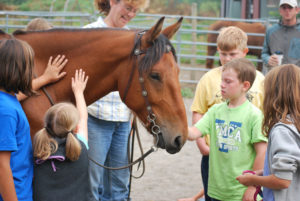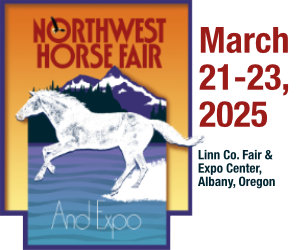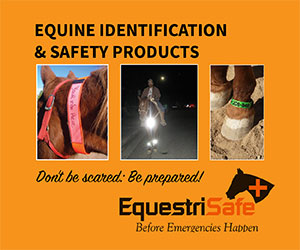The Therapeutic Benefits of an Equestrian Lifestyle
by Allison Trimble
Horse people rarely question the value of the equestrian lifestyle. Nearly everyone can give a laundry list of things gained from having horses in their life. I am no different. I feel that many of the positive qualities I possess can be directly attributed to lessons learned through my relationship with horses.
The same path that led me to those life lessons, directed me to training horses and people through my program, Willfully Guided. A few years ago, I offered a horse camp experience to 30 underprivileged homeless and foster children through an enrichment program called Blue Skies for Children. This opened my eyes, in a new way, to the power of the horse/human relationship and the profound impact horses can have on people, including those in crisis.

Since that camp, I have a growing awareness of what horses mean to me personally and have learned more about equine assisted therapy through those involved in this growing field. There is significant science behind this therapy, and remarkable success is often seen in people who have been slow to improve through traditional methods. Often, people will make breakthroughs, or speak for the first time of personal trauma, while working with a horse.
At its most simple definition, Equine Assisted Therapy (EAT) allows people to work on life struggles through their interaction with a horse. Depending on the therapist and their qualifications, it may also be called Equine Facilitated Psychotherapy and/or Learning (EFPL/EFL). The thing I find most impressive about EAT is the effectiveness of using metaphor in horse/human interactions that directly relate to a person’s life skills. As a professional horse trainer, I see those connections, but our focus is nearly always on the development of the horse. The human is the indirect recipient of the lesson. We accept that a horse is the mirror to the person in his life, but we rarely expand on what that means.
Horses operate on a trust system. The principal of trust for a person in crisis and for a horse have similarities. As flight or fight animals, horses assess a situation or person at face value. In the wild, their very survival depends on being able to “read” a situation. Learning to navigate the trust system with a horse can give a person confidence in their daily life.
“Humans can often find themselves stuck in situations or in their emotions, but horses rarely do this. They help teach people about dealing with what is in front of them, in the moment,” says EAT therapist Lorna Shepardson, owner of Therapy N Motion.
Horses respond best to a clear and concise leader, with specific intention. Humans tend to be less physical in their expression of emotion while horses are more physical. Through sessions with a horse, a person learns to move and compel a 1000 pound animal. The results can be seen and are both physical and emotional. While sometimes difficult and frustrating to execute, lessons learned can have a profound impact because they are experiential in nature. Participants learn how to set boundaries and keep them. This is a skill that is critical for healthy relationships and directly translates into a person’s real life.
In my quest to learn more about this process, I reached out to people in the EAT community, including Lorna Shepardson and Amy Schiller. In our conversations, I am frequently surprised by the things that I know and accept about horses, yet never associated or attributed to humans. For example, one of the exercises is to observe horses in a herd scenario and discuss their body language, making observations about their demeanor, spatial awareness and connections in the herd. This is a powerful metaphor useful in human interactions and I find it fascinating. I have also been reading a book by Leigh Shambo, one of the leading authorities and practitioners of EAT called The Listening Heart. It examines the foundation and application of equine assisted therapies. I encourage you to read this book; it is quite moving. The lessons taught by horses are endless.
My interest in EAT is two-fold: Couldn’t these concepts be useful to all humans, in crisis or not? Wouldn’t I be a better trainer, mother, friend, and human being if I deliberately sought to implement the metaphors into daily life, not simply use them in my profession? I embrace the naturally occurring therapeutic benefits of a life with horses, but I am excited to find ways to thoughtfully integrate these concepts into a proactive program, one that builds happy horses and humans.
Published February 2014 Issue

Allison Trimble is a Realtor® specializing in equestrian properties, farm and ranch properties, and residential real estate. She’s a former horse trainer, and a current owner, breeder, and non-pro competitor in cow horse and reining events. For many years, Allison wrote a monthly column for The Northwest Horse Source.
Learn more at www.allisonblakerealestate.com





